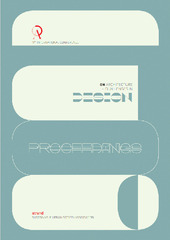Приказ основних података о документу
Reimagining Materiality: Circularity Potential of 3D Printed Architectural Elements with Recycled Clay
| dc.creator | Miloševic, Jelena | |
| dc.creator | Brajković, Jelena | |
| dc.creator | Josifovski, Andrej | |
| dc.creator | Žujović, Maša | |
| dc.creator | Živković, Milijana | |
| dc.date.accessioned | 2023-12-20T14:04:51Z | |
| dc.date.available | 2023-12-20T14:04:51Z | |
| dc.date.issued | 2023 | |
| dc.identifier.uri | https://raf.arh.bg.ac.rs/handle/123456789/1885 | |
| dc.description.abstract | This paper explores the application of 3D printing with recycled clay for architectural building elements, emphasizing its potential to contribute to a circular economy. The AEC industry has traditionally been associated with high material waste and environmental impact. However, the advent of 3D printing has revolutionized architectural design and manufacturing processes. Using recycled clay as a printing material, can address two challenges: reducing waste and promoting sustainability. Recycled clay, obtained from construction and demolition waste or other sources, offers advantages such as abundance, low cost, and a low environmental footprint, making it suitable for circular economy practices. Moreover, using recycled clay in 3D printing enables architects to create complex, customizable, and structurally efficient building elements, reducing the need for labor-intensive, resource-consuming traditional manufacturing techniques. The principles of the circular economy involve diverting collecting, processing, and transforming clay waste into printable material. Resource extraction and energy-intensive manufacturing processes associated with conventional building materials could be reduced by reusing and recycling clay. The paper examines case studies and ongoing research efforts in the field of 3D printing with recycled clay, demonstrating the potential of this approach to contribute to a circular economy in the AEC industry. This approach reduces waste, preserves natural resources, reduces carbon footprint, improves energy efficiency, and creates sustainable and aesthetically pleasing architectural structures. In conclusion, integrating 3D printing technologies with recycled clay presents a promising way towards creating a sustainable closed-loop circular economy system in architecture. By reimagining the construction process, designers and builders can contribute to an environmentally friendly and resource-efficient future while pushing the boundaries of architectural innovation. | sr |
| dc.language.iso | en | sr |
| dc.publisher | Belgrade : STRAND - Sustainable Urban Society Association | sr |
| dc.relation | info:eu-repo/grantAgreement/MESTD/inst-2020/200090/RS// | sr |
| dc.rights | openAccess | sr |
| dc.source | On Architecture – Challenges in Design : proceedings | sr |
| dc.subject | 3D printing | sr |
| dc.subject | sustainable construction | sr |
| dc.subject | circular economy | sr |
| dc.subject | clay materials | sr |
| dc.title | Reimagining Materiality: Circularity Potential of 3D Printed Architectural Elements with Recycled Clay | sr |
| dc.type | conferenceObject | sr |
| dc.rights.license | ARR | sr |
| dcterms.abstract | Жујовић, Маша; Брајковић, Јелена; Јосифовски, Aндреј; Зивковиц, Милијана; Милошевиц, Јелена; | |
| dc.citation.spage | 246 | |
| dc.citation.epage | 254 | |
| dc.identifier.doi | 978-86-89111-34-7 | |
| dc.identifier.fulltext | http://raf.arh.bg.ac.rs/bitstream/id/6591/strand.pdf | |
| dc.type.version | publishedVersion | sr |

